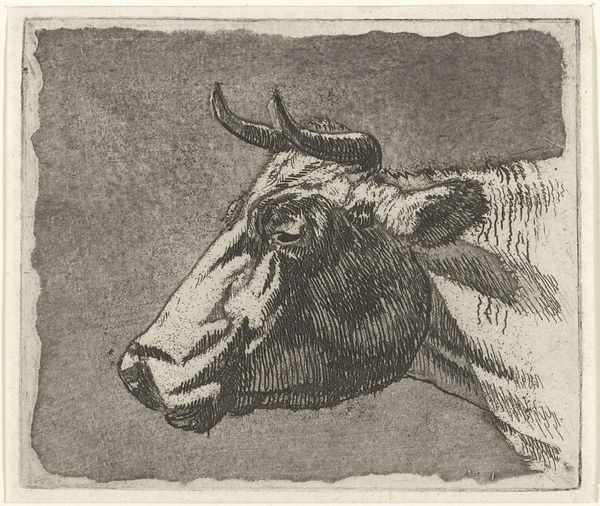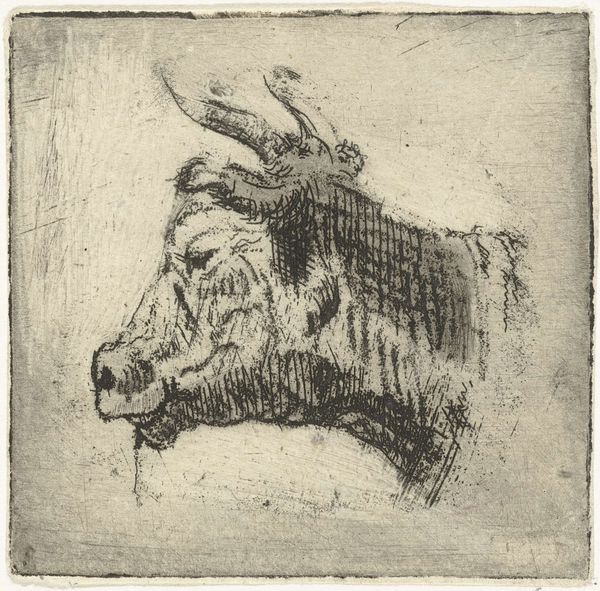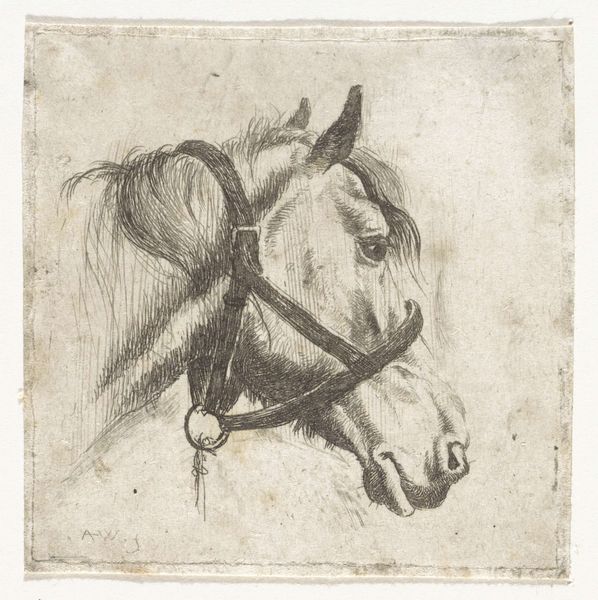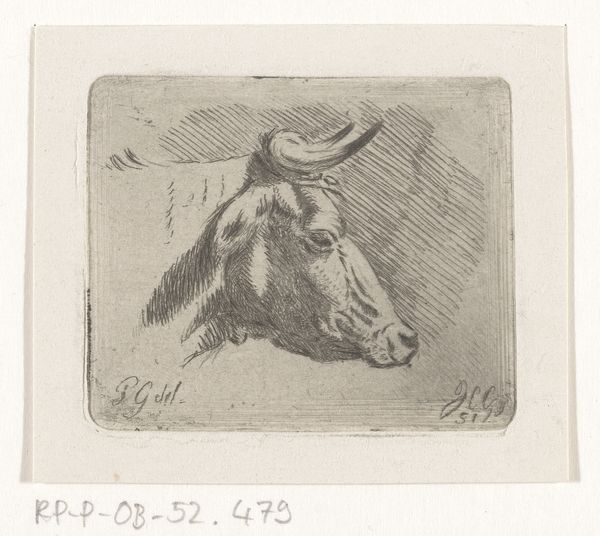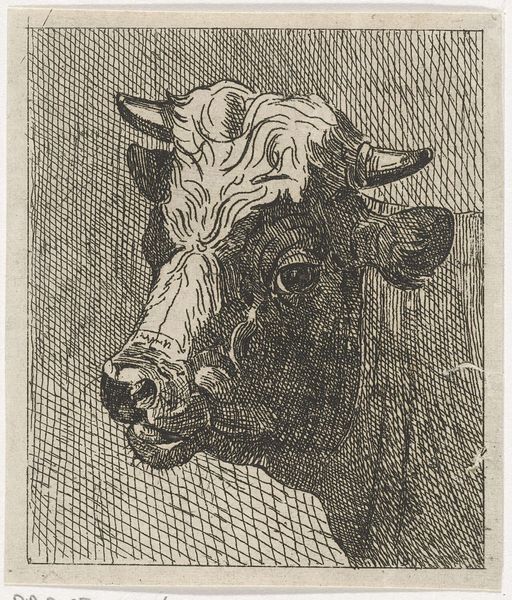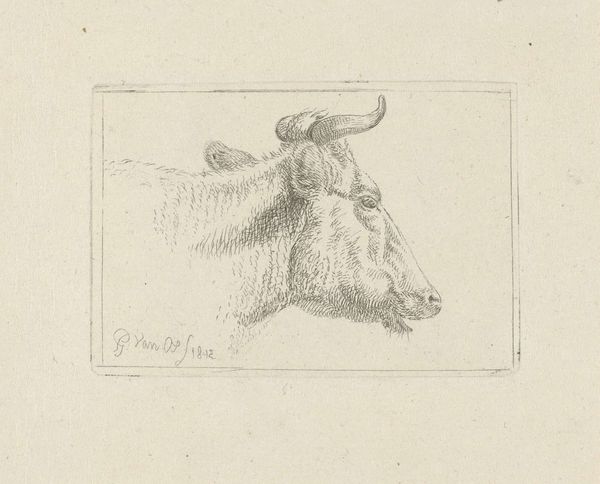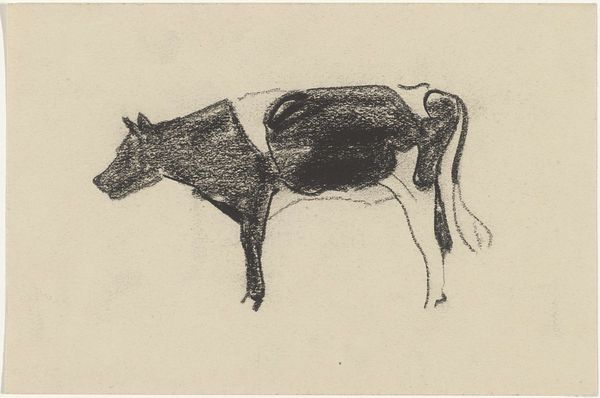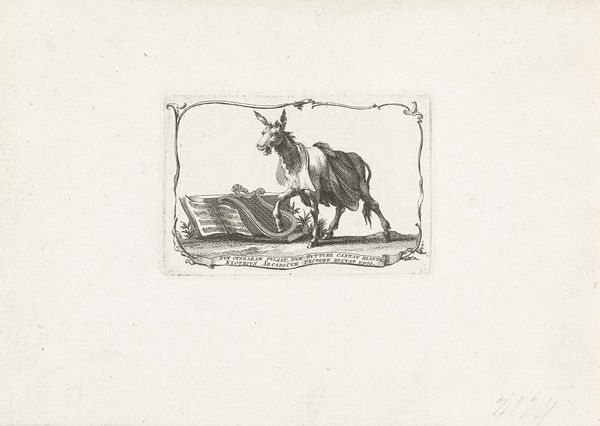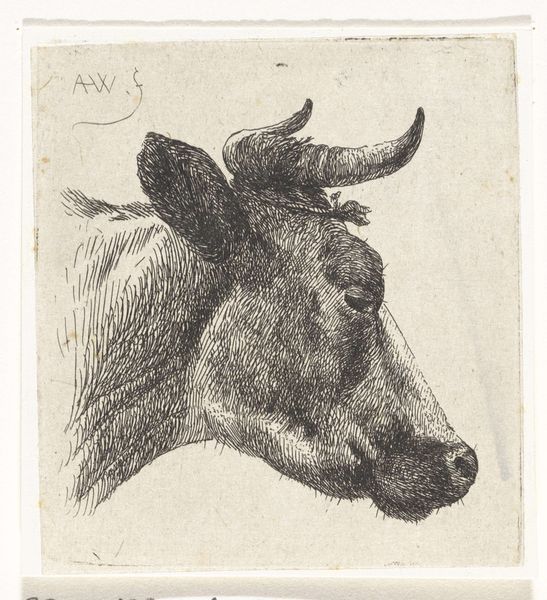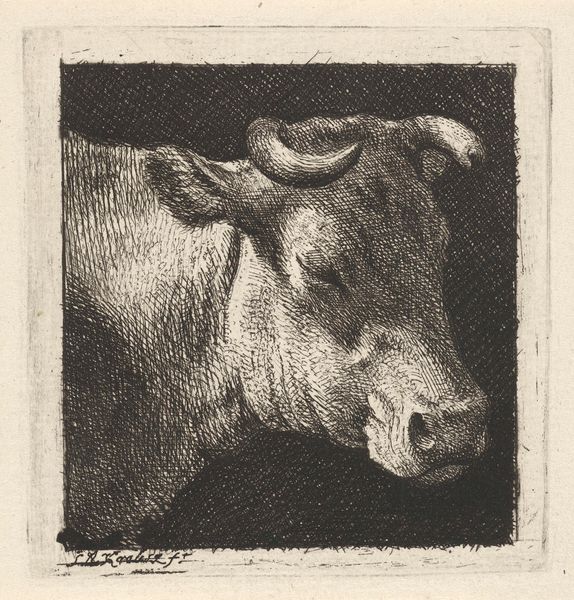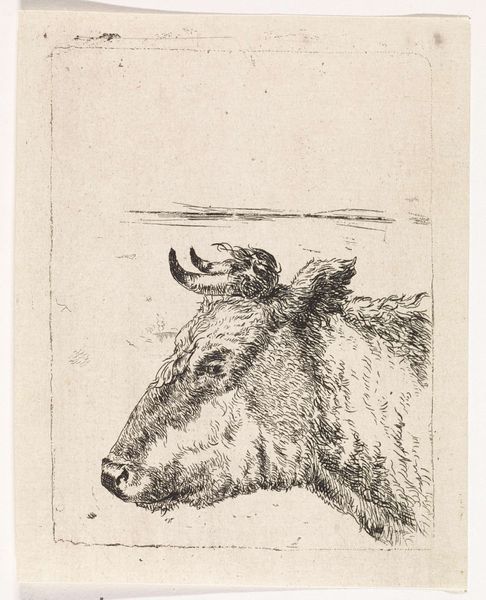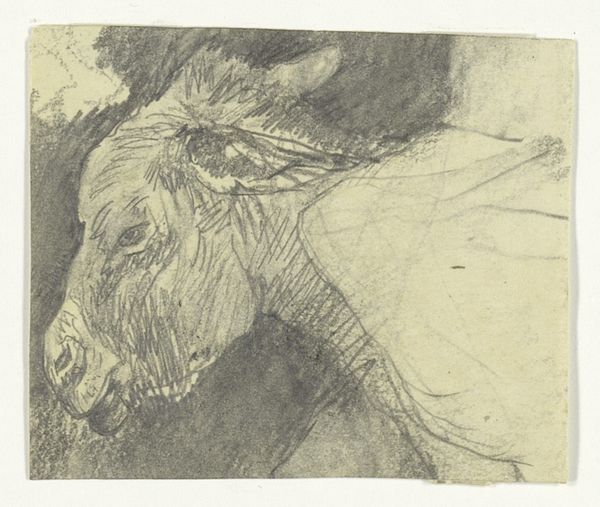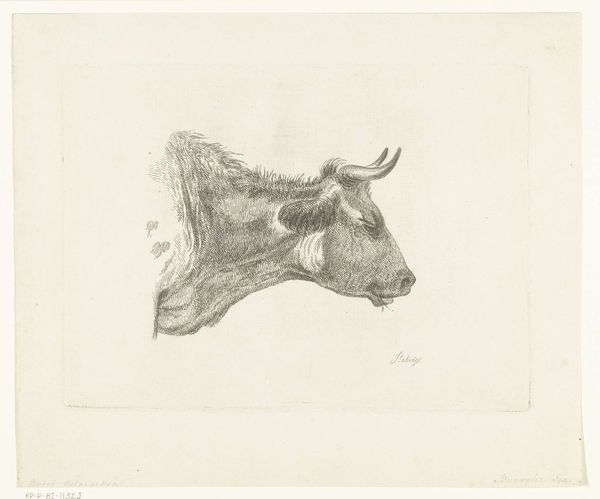
print, etching
# print
#
etching
#
landscape
#
realism
Dimensions: height 83 mm, width 99 mm
Copyright: Rijks Museum: Open Domain
Curator: Before us we have "Koeienkop," which translates to "Cow's Head," an etching attributed to Johannes Janson, dating back to somewhere between 1761 and 1784. The work is currently held at the Rijksmuseum. Editor: There’s a kind of starkness to this. A simplicity. The low contrast palette focuses us completely on the subject, with no frills, just this animal rendered directly in line. Curator: Yes, there is a decided directness in the representation. Janson seems preoccupied with achieving almost photographic realism here. Look at the textures rendered through the etching technique – the subtle lines and cross-hatching that delineate the musculature and hide of the animal. Editor: But whose realism are we talking about here? Certainly, the focus on livestock in art at this time speaks to a specific understanding of Dutch national identity, closely bound to agriculture and rural life. It serves almost as propaganda. Curator: While I appreciate that context, it seems to be drawing a rather long bow to consider this "propaganda". Note, rather, the use of light, strategically placed to emphasize the volume of the head. See how this technique allows Janson to suggest depth within a relatively shallow pictorial space? Editor: But you can’t divorce the aesthetic from the socioeconomic conditions that allow certain artistic subjects to rise to prominence. This image elevates cattle in a society fueled by their exploitation. Consider also how little space is afforded in terms of animal welfare under these conditions of profit. Is this image of bovine docility masking brutality? Curator: Well, I would simply note that, without imposing our contemporary values, there's considerable artistry in observing and translating the subtle nuances of form and texture. Notice, the rendering of the eyes captures something so lifelike about this animal; and isn’t it a wonderful example of printmaking during the period? Editor: Perhaps it reflects a shared human and animal condition of labor under unequal structures, a quiet reflection in its patient, unblinking gaze? We bring different expectations of seeing. Curator: Indeed, different approaches inevitably shape our perspective and interpretation of art. Editor: Leaving us much to contemplate beyond a singular head in this etching.
Comments
No comments
Be the first to comment and join the conversation on the ultimate creative platform.
